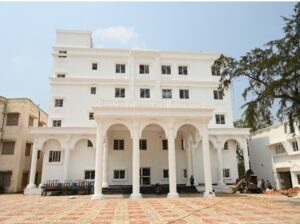SINGAPORE — In a world where mathematics is a universal language and a fundamental tool for science subjects, how do young learners from different countries perform in maths? When it comes to children’s mathematical proficiency, which of these four countries stands out: Singapore, South Korea, Japan, or India?
By integrating AI technology and educational expertise, Creta Class provides unique insights into these fascinating questions.
Covering a sample of around 50,000 global users, we focused on young learners aged 3-6 years old, spotting trends in 4 key areas within Creta Class’s learning programme: Video Lessons, Quizzes, Math Talk Sessions, and parents participation.
Join us as we reveal interesting insights into how children in Singapore, India, Japan and South Korea navigate maths and how their parents are involved in the process.
Singaporean Children Has Best Concentration in Maths Learning
Overall, Singaporean children demonstrate remarkable attention skills, as more than 70% of children aged 4-7 can complete a full lession in a single sitting without interruption. Furthermore, their average time to complete the lesson, (approximately 15 minutes), is among the shortest. For instance, in the case of 3-4 years old, Singaporean children exhibit even greater speed, with a median completion time of 8 minutes, which stands in contrast to 9 minutes for Indian and Korean children, and up to 11 minutes for Japanese children.
Parents of Children Aged 5-6 in Korea Are Most Involved
Based on a set of data on Korean and Indian parent-teacher interactions, it is observed that, compared to other age groups, Korean children aged 5-6 years old exhibit a significantly higher parental involvement index (stage involvement rate/average parental involvement rate in that country * 100) of 114. Starting from the age of 3, Korean parents’ involvement continues to increase until it peaks at 5-6 years old. The trend is similar for Indian parents, but Korean parents show higher levels of engagement at ages 4-6.
Indian Children Lead in Arithmetic Competency
Indian children has recorded outstanding results in the “Numbers and Operation” module, achieving an 3-star accuracy rate of 83.2%. Singaporean children of the same age group also did well, securing an excellent rate of 81.8%, whereas Korean and Japanese children exhibited slightly lower performance.
Japanese Children is Most Reserved in Mathematical Expression
In general, Japanese children have a more conservative approach to verbal participation than children from the other three countries. In particular, in the 4-5 year old age group, 86% of the Indian children are engaged in active verbal participation, compared to 72% of the Japanese children. Among those who have participated, the Indian children spent an average of 72 seconds in the Math Talk session, compared to 35 seconds for Japanese children.
We live in a diverse world where children in every country exhibit uniqueness in their learning performance. Additionally, their performance are influenced by educational environments, styles, and cultures. With the support of big data, children’s learning behaviors and trends can be better observed and understood by educators today.
As an international education company, Creta Class respects and actively embraces multiculturalism. We are committed to researching the learning behaviors of global children and developing learning content that caters to children with different behavioral patterns. While we strive to enhance children’s knowledge and capabilities, we also nurture their enduring passion for learning, facilitating their development into well-rounded individuals.
Achieving these goals requires effort and collaboration of every parent, educator, and other stakeholders in children’s education. It’s our mission to provide a supportive learning environment that ignites curiosity, boosts self-confidence, and fosters intellectual exploration.








